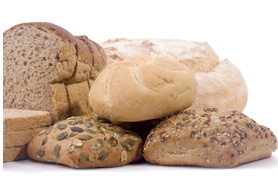Xanthan Gum - Properties, Uses & Side Effects
What is Xanthan Gum
Technically, xanthan gum (e number e415) is a polysaccharide used a food additive, produces by the fermentation if sugar or glucose, using the Xanthomonas campestries bacterium. In layman terms, it is nothing but a natural carbohydrate gum, produced by the bacteria fermented strain. It is a food additive that work as thickening agent and and emulsion stabilizer.

The slimy substance formed by the bacteria is the actual element that acts as a thickener.
Xanthan Gum Properties
- Xanthan gum is a viscose xanthan gel that is an effective thickening vegetable gum for increasing thickness in various cooking uses.
- Any kind shear of force, like shaking, mixing or blending results in lesser viscosity. But once the effect of the forces is no more, it gets back to thick xanthan gel or xanthan gum form
- It has binding forces that keep the ingredients of the foods held together.
- It has binding forces that keep the ingredients of the foods held together.
- It is gluten free emulsifying agent.
- It is not easily affected by the changes in temperature.
- It also has skin hydrating properties.
Xanthan Gum Uses
With its thickening and stabilizing properties, xanthan is a popularly used substance. It is a heavily used gum for the industrial uses in the food industry. Its thickening and binding qualities make it a very useful cooking aid food additive in bakery products and dairy uses. Some of the common uses of the xanthan gum is in ice creams, salad dressings, and gluten free breads. Let's see the primary xanthan gum uses across the food and other industries.
- Dairy products like salad dressings & milk based sauces make use of xanthan gum.
- Xanthan gum acts as substitute for wheat and other cereals used for making bread that is gluten free.
- Xanthan gum use is not just for industrial uses, as a thickener is also used for enhanced viscosity for household kitchen uses as well. It is an easy way of thinking soya-milk rice, and non dairy soups and ice creams.
- Toothpaste and some cosmetic and beauty products use xanthan gum for keeping the constituents well binded and then loosen up on shaking or mixing.
- Guar xanthan combination is often used in ice creams and other frozen foods and beverages.
- Xanthan gum substitute uses include substituting as a commercial thickener along egg whites for the fatty yolk emulsifier.
- With its twin properties of being a skin hydrating agent as well as thickener and constituent binder, it is often used in cosmetic and beauty products like face packs and beauty gels.
- Xanthan gum use in oil industry is of the important xanthan gum uses. Natural thickeners like guar or xanthan gum is added to water to increase its viscosity and then using it as a lubricant.
Xanthan Gum Side Effects
Xanthan gum side effects are not many, but still for those who are allergic to xanthan, should stay away from products with xanthan gum. Xanthan dust particles are known to cause respiratory problems. Apart from the above mentioned two xanthan gum side effects it is a fat and gluten free ingredient that works well as thickener and an emulsifying stabilizer.
xanthan gum powder is one of the popular food additives and ingredients in most countries, As a professional xanthan gum powder supplier and manufacturer, FOODCHEM has been supplying and exporting xanthan gum powder from China for almost 10 years. Any inquiries and problems please feel free to send Emails to us via inquiry@foodchem.cn, we will reply you within 1 working day.
